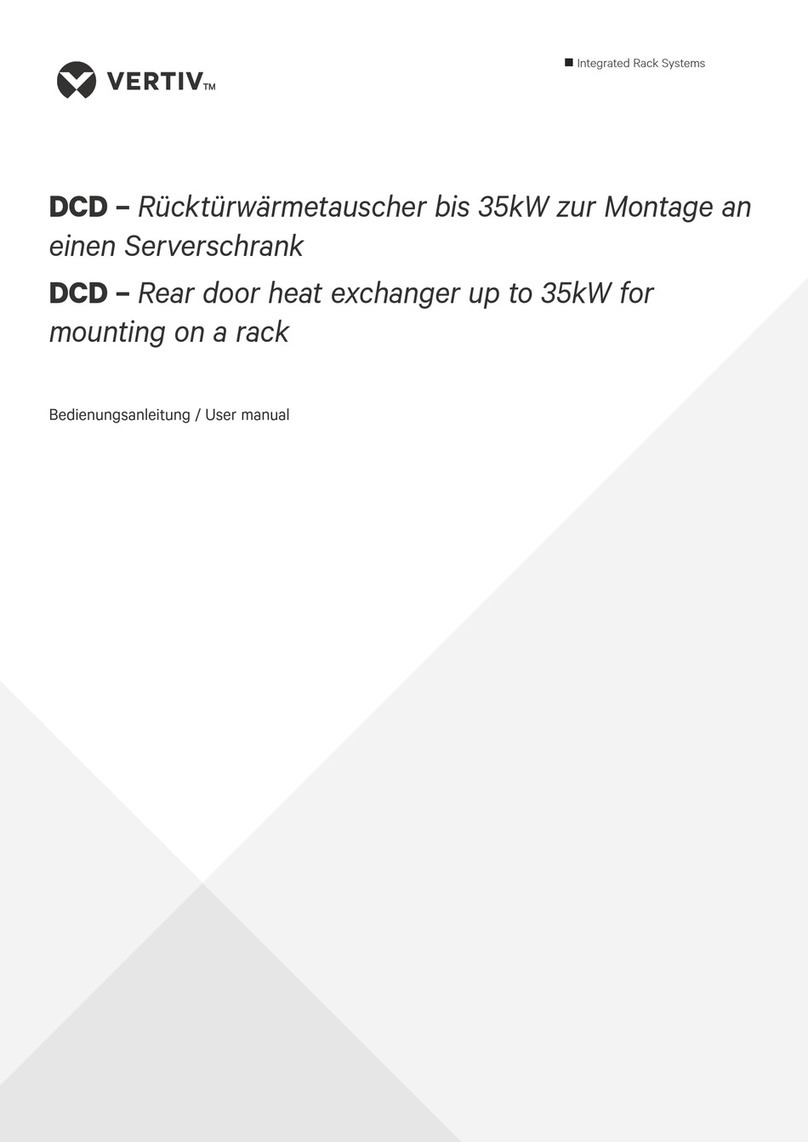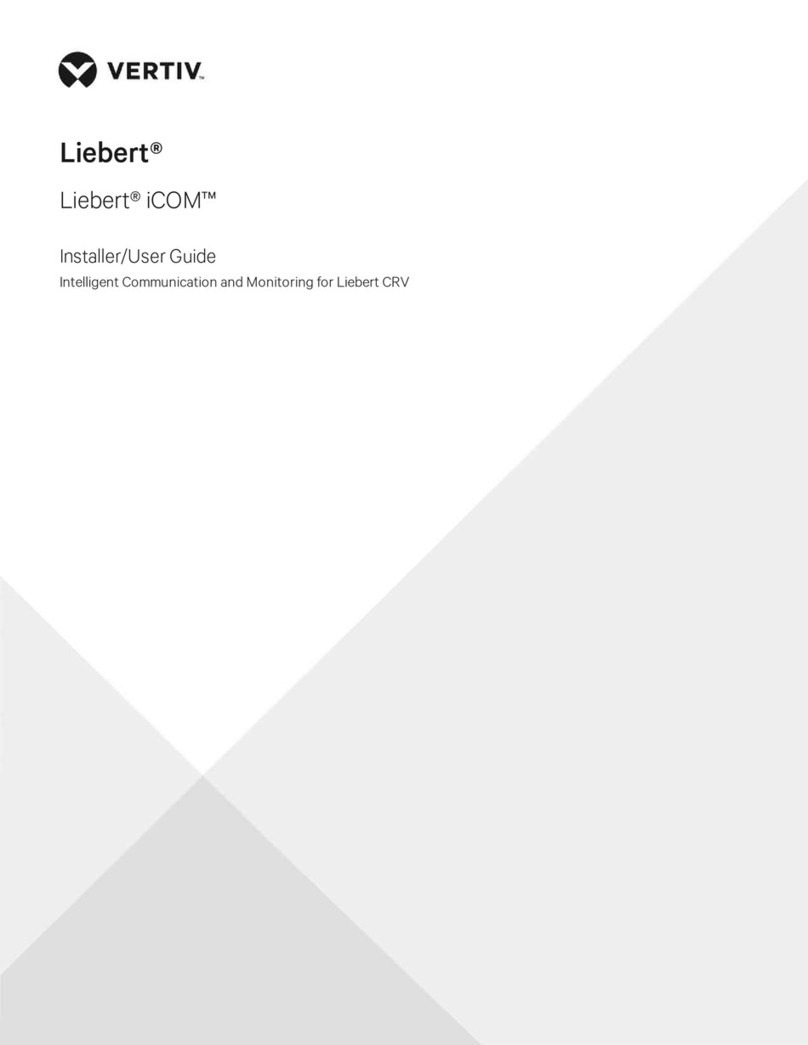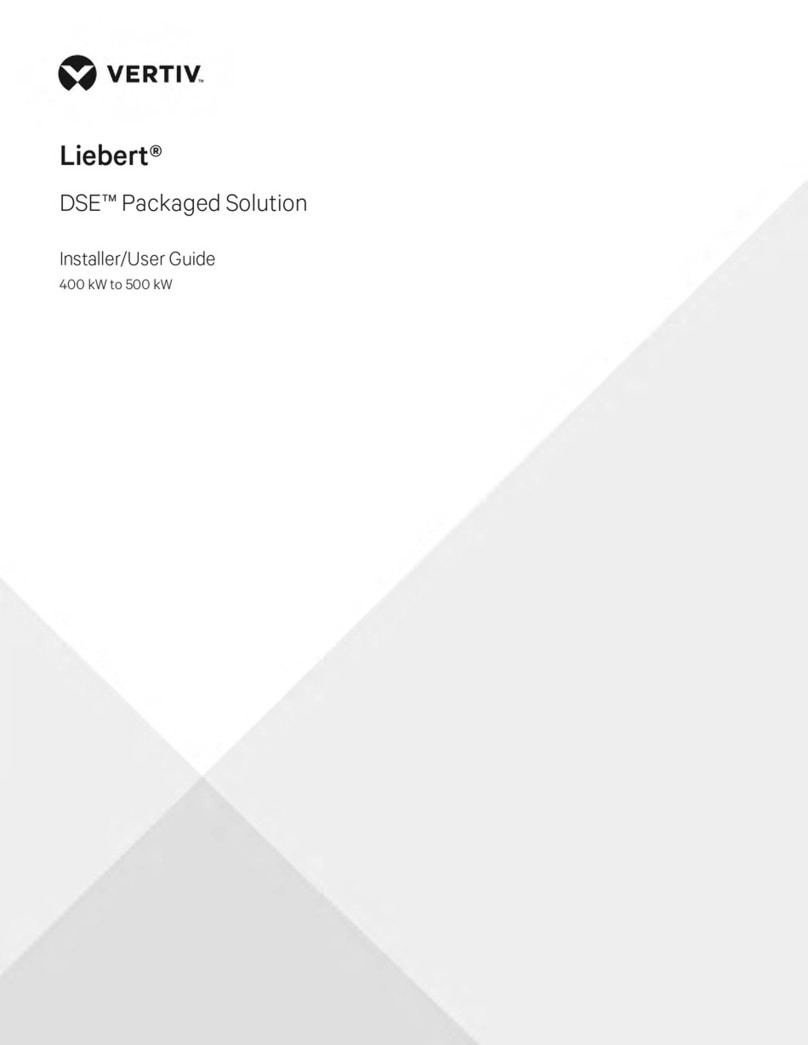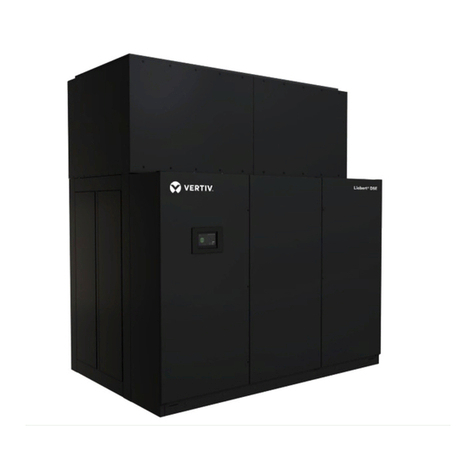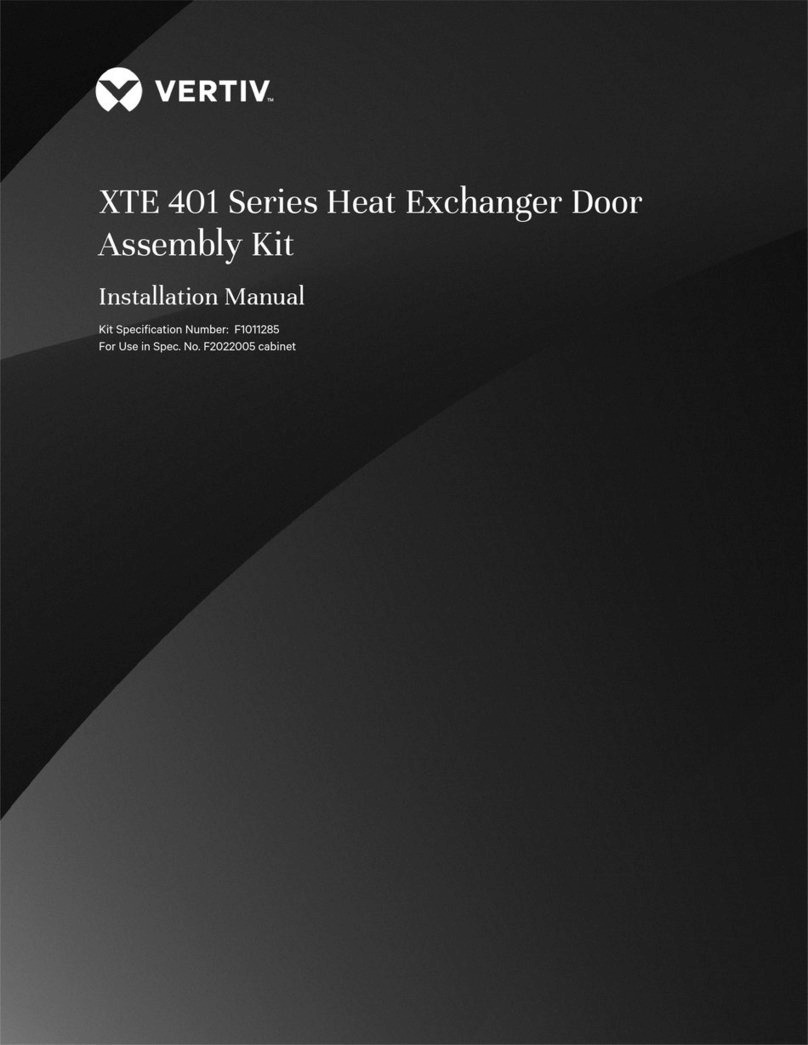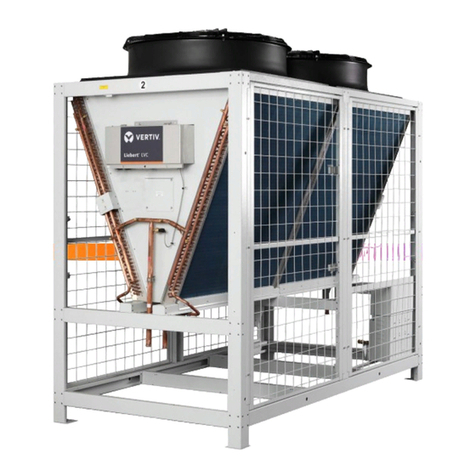
1 IMPORTANT SAFETY INSTRUCTIONS
SAVE THESE INSTRUCTIONS
This manual contains important safety instructions that should be followed during the installation and
maintenance of the Liebert®DCD. Read this manual thoroughly before attempting to install or operate
this unit.
Only qualified personnel should move, install or service this equipment.
Adhere to all warnings, cautions, notices and installation, operating and safety instructions on the unit
and in this manual. Follow all installation, operation and maintenance instructions and all applicable
national and local building, electrical and plumbing codes.
WARNING! Arc flash and electric shock hazard. Open all local and remote electric power
disconnect switches, verify with a voltmeter that power is Off and wear personal protective
equipment (PPE) per NFPA 70E before working with the module. Failure to comply can cause
serious injury or death. Follow all local codes.
WARNING! Risk of heavy module falling. Can cause equipment damage, injury and death. Two
properly-trained and qualified people are required to move and install the module. The DCD™
weighs in excess of 210lb(95kg). Do not leave a DCD™ standing unattended on its side or its
end without adequate support to prevent it from falling over. The module must be supported at
all times or laid flat on protective material until it is installed. Read all instructions before
attempting to move, lift, remove packaging from, or prepare the module for installation. See
Table 4.2 on page19, for unit weights based on model.
WARNING! Risk of improper operation and overpressurization. Can cause equipment or other
property damage, injury and death. Only personnel properly trained and qualified in HVAC
installation or service should install or service this equipment
WARNING! Risk of contact with high-speed, rotating fan impeller blades. Can cause injury or
death. Open all local and remote electric power-supply disconnect switches, verify with a
voltmeter that power is off, and verify that all fan impellers have stopped rotating before
working in the unit cabinet.
CAUTION: Risk of contact with sharp edges, splinters, and exposed fasteners. Can cause
injury. Only properly trained and qualified personnel wearing appropriate, OSHA-approved PPE
should attempt to move, lift, remove packaging from or prepare the unit for installation.
1 Important Safety Instructions 5
